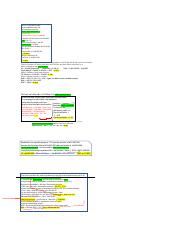Content

It is expressed in the form of the equation as the difference between a company’s liabilities and its assets. These documents help track financial performance, comply with regulations and tax audits, and detect fraud and waste. Stay up to date on the latest corporate and high-level product developments at BlackLine. Join an exclusive community of more than 350,000 accounting professionals. Unlock capacity and strengthen resilience by automating accounting. Save time and cost, decrease risk, and elevate the organization. Centralize, streamline, and automate intercompany reconciliations and dispute management.
This means that the sum of the accounted debit amounts must equal the sum of the accounted credit amounts . Since one journal entry line cannot have both debit and credit amounts, a journal entry must have at least two journal entry lines, one with a debit amount and another with a credit amount. The goal of Subledger Accounting is to generate journal entries for transactions that occur in subledgers. For users integrating subledger accounting into their applications, it is critical to have a clear and common definition of a subledger journal entry. A common definition ensures the validity of all journal entries generated by Subledger Accounting.
Example- Purchasing equipment journal entry
This arrangement will show clearly which account is debited and which credited. This also shows that credit amount is placed on the right side of debit amount. The world “Dr” is used at the end of the name of account debited. It is not necessary to place the word “Cr.” after the name of the credited account, because if one account is Dr. it follows that the other account must be Cr. Below the names of the two accounts, i.e. in the third line narration is written usually within a bracket. According to tradition, narration is written starting with a word “being”.
What are the 2 types of journal entry?
1. Simple Journal Entries: Here only 2 accounts are affected, one that is debited and the other that is credited. 2. Compound / Combined Journal Entries: Here more than 2 accounts are affected.
In both examples, the journal entries increase and decrease the corresponding accounts accordingly. The few journal entries that still need to be made are mostly for accruals at the end of a period or to adjust to GAAP-basis accounting. Non-cash transactions like depreciation and amortization https://online-accounting.net/ may also require journal entries. The accepted, standard practice is to use a double-entry accounting system, which generally entails the use of both a general ledger and a general journal. It can also include the use of special journals for frequent transactions within a specific category.
Alert: highest cash back card we’ve seen now has 0% intro APR until 2024
Seamlessly integrate with all intercompany systems and data sources. Automatically identify intercompany exceptions and underlying transactions causing out-of-balances with rules-based solutions to resolve discrepancies quickly. Each of these journal entries would then be manually posted to the general ledger.
The use of folio numbers makes it easy to refer back from the ledger account to the journal entry or forward from the journal entry to the ledger account. Here are numerous examples that illustrate some common journal entries. Once established, automation leads to robust and dependable processing that, unlike manual controls, can be relied upon to work faultlessly every time. Automation of journal processing leads to Journal entry definition higher levels of confidence and control while cutting swathes of time out of the `first mile’ of finance. Journal entry is an extremely labor-intensive and time-consuming part of any close process. Month-end journals in a large enterprise can easily number the thousands, often requiring the completion of unwieldy data validations, error corrections and approval routing being uploaded to an ERP system for posting.